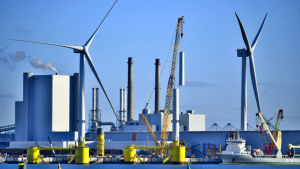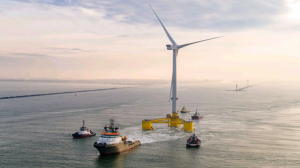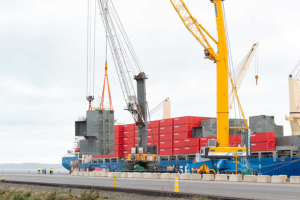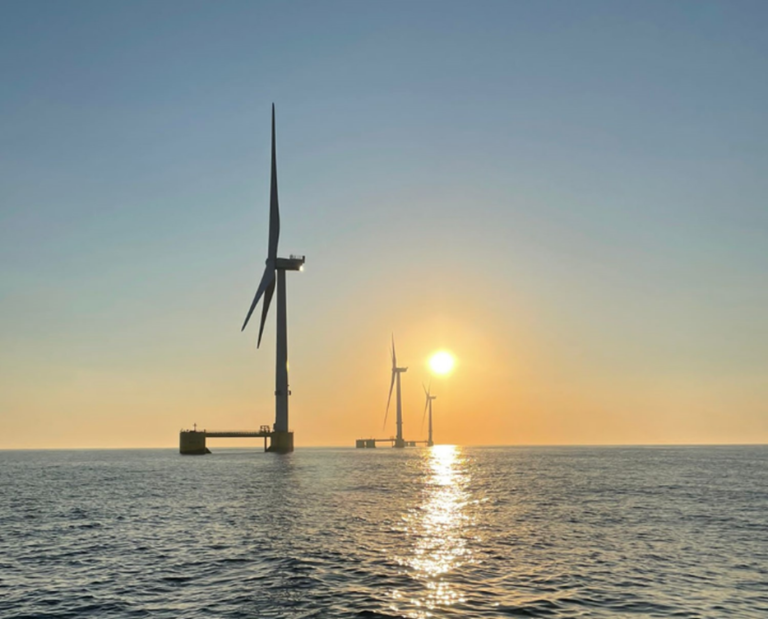Within the offshore wind market, the advancement of technology and its impact on project efficiency, cost reduction, and environmental sustainability has taken a big jump in recent years. Deeper waters are being explored and we are pushing the limitations of what was thought to be possible.
This article discusses the progress being made in floating offshore wind, it’s advantages and the challenges still to be addressed.
Progress so far
Within the offshore wind market, the advancement of technology and its impact on project efficiency, cost reduction, and environmental sustainability has taken a big jump. Deeper waters are being explored and we are pushing the limitations of what was thought to be possible. The overall development of global floating offshore wind farms is still in an early stage and has not yet reached widespread commercial viability, however significant progress has been made in recent years in both technology innovations and assessing ways to reduce costs.
Several single turbine prototypes have been installed since 2007. Some more prominent multi turbine FOW projects are: Hywind Scotland, WindFloat Atlantic, Kincardine Offshore Wind Farm, Provence Grand Large and Hywind . In the quest for sustainable energy sources, floating has emerged as a promising solution. About 80 % of the world’s offshore wind resources are found at depths beyond 60 meters and the focus on exploration of these areas is of increasing interest globally. Innovative technology allows wind turbines to be installed in deeper waters, where traditional fixed-bottom foundations are impractical and expensive. Expectations are that offshore wind will form a significant percentage of the renewable energy sources globally going into double digits. In Europe offshore wind already accounts for 10 % of the electricity production of some countries, and for many such as Italy, Spain and Portugal, floating offshore wind is a very attractive option.
The Advantages of Floating Offshore Wind
Floating offshore wind offers not only scale up options it also has an interesting capacity advantage since deeper water offers access to stronger and more consistent wind speeds, potentially doubling the energy production compared to shallow-water installations with the same rotor size. Another advantage is the minimal seabed disturbance during installation and the easy decommissioning, both minimizing environmental disruption compared to fixed-bottom installations. Situated far from shore, offshore floating wind farms also have minimal visual impact, addressing concerns associated with nearshore and onshore wind projects, offering potential for greater social acceptance.

Kincardine Offshore Wind Farm assembly in Rotterdam. Source: https: //www.principlepower.com/news/kowl-worlds-largest-floating-windfarm-fully-operational
The challenges to overcome
Although the advantages are appealing there are some challenges to be overcome as well. One of which is the technological complexity related to stability, mooring systems, and dynamic response to waves and currents.
Costs are another challenging aspect since floating wind remains more expensive than traditional onshore and fixed-bottom offshore wind installations. Cost split for floating wind projects deviates from fixed bottom offshore wind and shifts towards the foundation and away from the turbine as being the major component. With increased distance to the shore, installation and operation and maintenance are more demanding to perform and lead to higher costs. Operating and maintaining offshore floating wind farms in remote locations also presents logistical challenges, including transportation, access, and harsh marine environments, necessitating robust maintenance strategies, and supporting . Indeed, some companies like Ørsted have been pulling away from floating projects.
 Kincardine Offshore Wind Farm. Source: https://www.principlepower.com/projects/kincardine-offshore-wind-farm
Kincardine Offshore Wind Farm. Source: https://www.principlepower.com/projects/kincardine-offshore-wind-farm
The expectation is there will be a significant decrease of cost after 2025 which will improve competitiveness. Cost reduction will depend on several factors, such as technological advances, cost and technical optimizations, wind farm and turbine size increase, economies of scale and standardization. Innovations are visible in every new project including designs with multi-rotor sets on a vertical axis, cleaver mooring systems to reduce the mooring materials in general or the amount of mooring chain required, hinging towers for easy access during repair or maintenance, innovative cable configurations and remote survey strategies are just a few examples of creative approaches to increase viability of projects.
Collaboration is key to industry progress
Governments also play an important role in the stimulation of FOW projects and the development that is required to reach scale-up. This is presented through, for instance, the initiative of the US government to stimulate the design, infrastructure, and supply chain development to facilitate future FOW projects. In Europe progress to prepare for major FOW projects is also pushing on and one of the examples showing this is the Port of Brest in France, that will see 900 million euros invested in developments heavily focusing on the energy transition, including establishing the port as a major player in floating wind. Another initiative announced in Europe is a joint venture named Windsteel Technologies. It will address what is expected to become one of the biggest bottlenecks in scaling the floating offshore wind industry: low-cost and high-capacity manufacturing of foundations for floating wind turbines by producing hundreds of floating wind foundations per year.

Wind turbine components arriving at Port of Brest. Source: https://www.offshorewind.biz/2024/02/23/assembly-of-largest-floating-wind-turbine-on-french-atlantic-coast-to-start-this-spring/
A promising future
Floating offshore wind holds huge potential and capacity could reach 250 gigawatts by 2050, contributing significantly to carbon emissions reduction and energy transition efforts. Projects like Hywind Tampen have already shown floating wind maturing from one off pilot projects towards full size wind farms. Innovations in materials, design, and manufacturing together with development of supply chain are key factors to overcome the challenges that lie ahead. Collaborative efforts among governments, industry stakeholders, and research institutions are essential to accelerate technology development and reduce costs which brings us closer to being able to scale up . The interest and the initiative are most certainly there and visible through the increasing FOW farm capacities and investments made in infrastructure to facilitate scale up of projects. This combined effort is building the foundation for a promising future for floating offshore wind.
OCA’s experience in floating offshore wind services like port assessments, supply chain studies, T&I modelling, LCOE modelling, vessel analysis and O&M modelling can support the development of a successful offshore floating wind project, so please get in touch to find out more.

